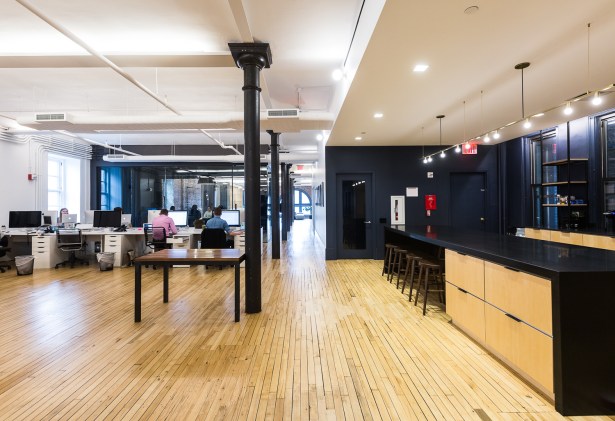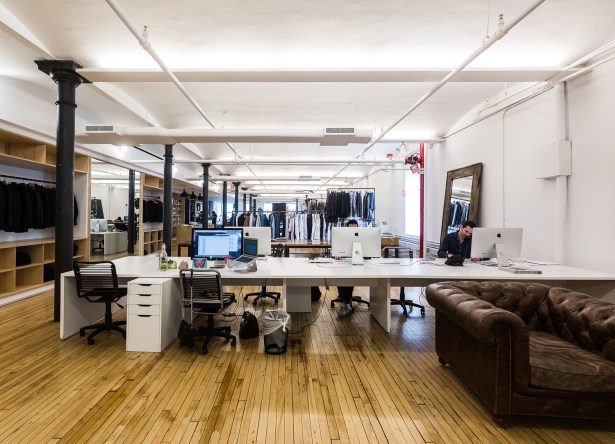The Plan: Online Custom Shirt Retailer Dresses Up Offices With a Showroom
By Liam La Guerre May 11, 2017 9:45 am
reprints
It’s no secret that e-commerce has been kicking brick-and-mortar’s butt lately. But at least one e-clothier believes customers still want to touch and feel products before they purchase them.
That’s why Seph Skerritt, the founder of online men’s custom dress shirt fabricator Proper Cloth, decided to include a showroom in his company’s offices when the firm moved into a 12,000-square-foot space on the sixth floor of 495 Broadway between Spring and Broome Streets in Soho last November.

The startup was born eight years ago as an e-commerce store and had a 3,000-square-foot office space nearby at 450 Broadway. As it turned out, customers often wanted to use the office to try on shirts, which sells for $85 to $300. So as Proper Cloth expanded to accommodate growth of the company, it also called for a Fogarty Finger-designed showroom area for patrons.
“We knew that customers liked to get fitted. They also like that feeling of ‘This is their headquarters—I can see the whole operation,’ ” Skerritt said during a recent tour of the space. “So as we grew we didn’t want to lose that [feeling]. That was part of what we were going for at 495 Broadway.”
Notably missing from the space is a cash register since all of the transactions are done online and the showroom is only for people to try Proper Cloth’s shirts and other products.
Fogarty Finger made the showroom area comfortable with a variety of sofas so customers could feel at home, and it is very bright as natural light flushes into the expanse from large arched windows.

“The main idea is a very bright, very Zen, very sophisticated and simple but clean, kind of Japanese,” said Alexandra Cuber, an associate director at Fogarty Finger, who designed the office and showroom.
But the design also plays up the industrial features of the building through using wood and stripping the walls to reveal bricks. (As in, keeping the brick part of brick-and-mortar literal.)
Fogarty Finger selected a light, tan plywood for the reception desk and shelves, matching the industrial nature of the building, Cuber explained. Also the designer modernized the original wood flooring and stripped white paint from the cast iron columns to reveal their true metallic nature.
While the atmosphere of the showroom is sophisticated, the music blasting when CO came by was Drake—that’s the “music we like to listen to,” Skerritt said. (CO was informed after the tour that the space enjoys a lot of hip hop music from artists such as Lauryn Hill, A Tribe Called Quest, D’Angelo and Frank Ocean.)
“I think custom clothes have a really, almost pretentious, old man, very rich or very preppy style; and our style and approach was to differentiate from that and show a young take. We are a younger brand and younger staff.”

Proper Cloth’s offices are located just beyond a glassed conference room near the showroom. The workspace, which currently seats 25 employees, is split by the right side in white walls and the left with black painted walls and fixtures. This keeps the work areas and common spaces separate—but also leaves a visitor with a yin-yang impression.
The dark left side has a large kitchen, four private bathrooms and a storage section. On the light right, there are open working stations, a library of fabric, a photo studio and a packing area near a freight elevator.
The interesting thing of the retail showroom model is customers can see what the staff is working on and, at the same time, staffers get a sense of what customers like and what kinds of people are wearing the brand.
“This connects us closer to our customers,” Skerritt said. “Everybody is thinking about who our customers are, how are they dressing, what are they doing, what sort of problems they might have and things they might be looking for.”


